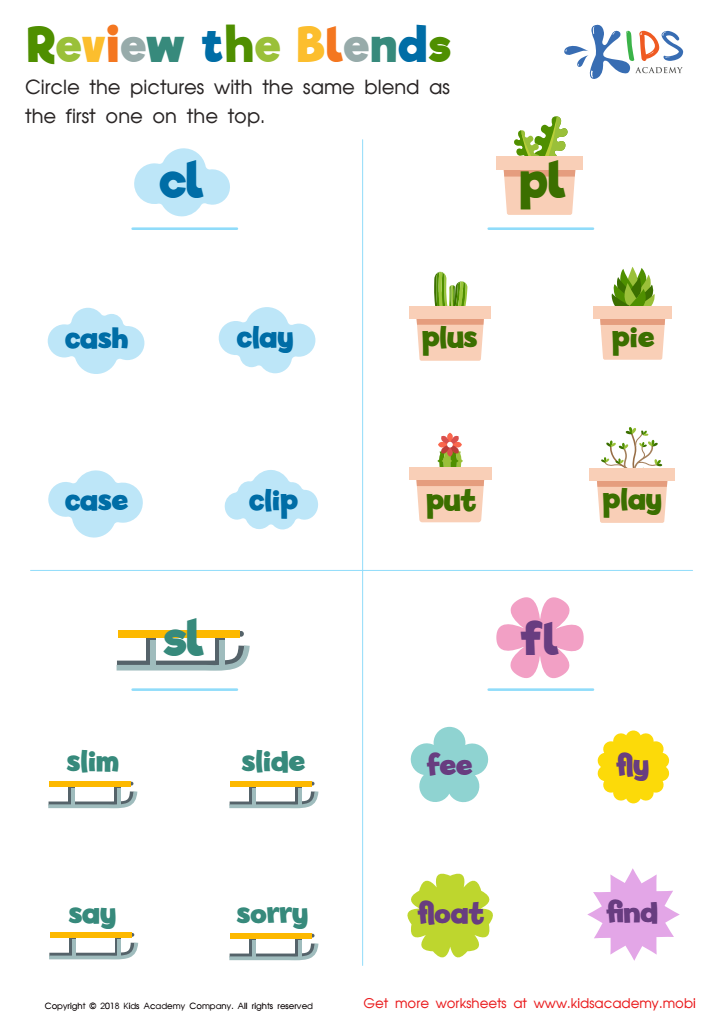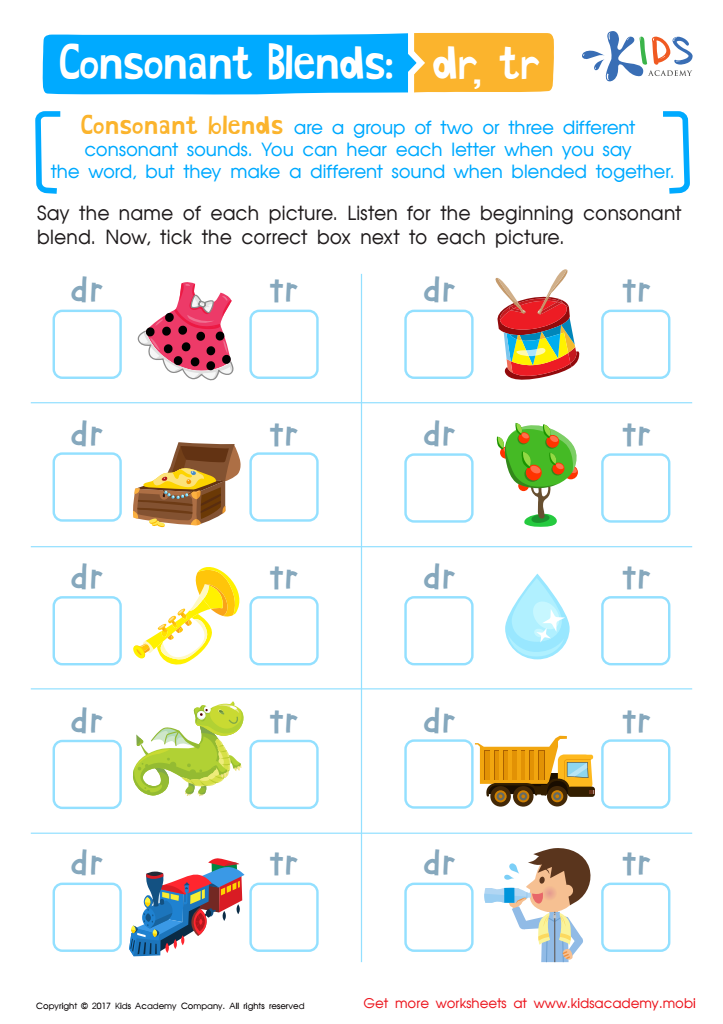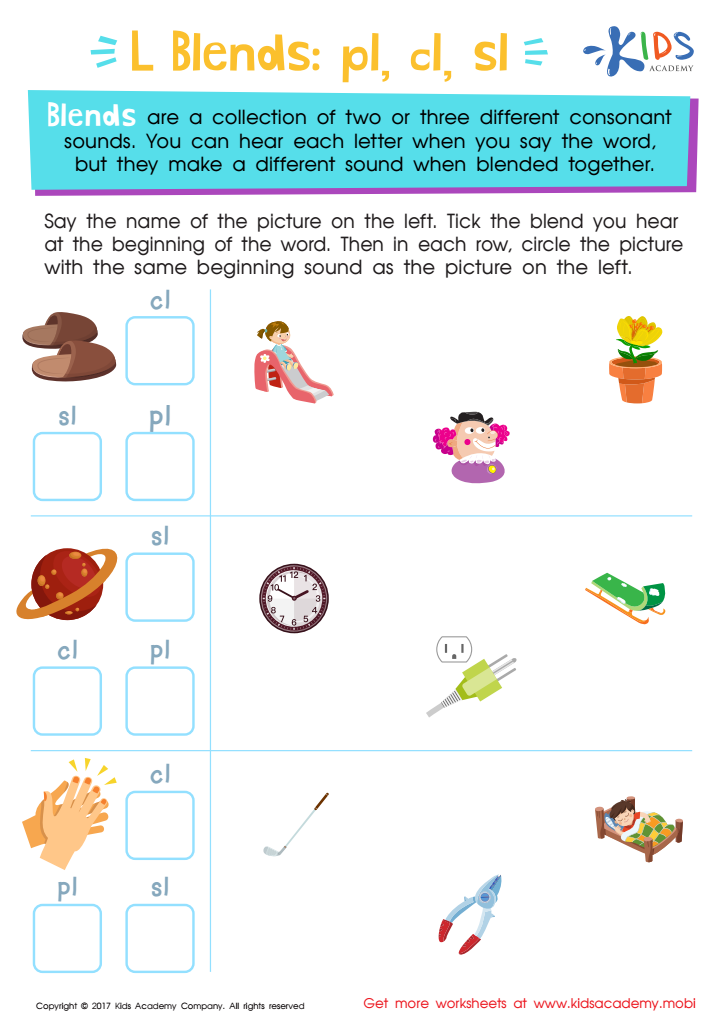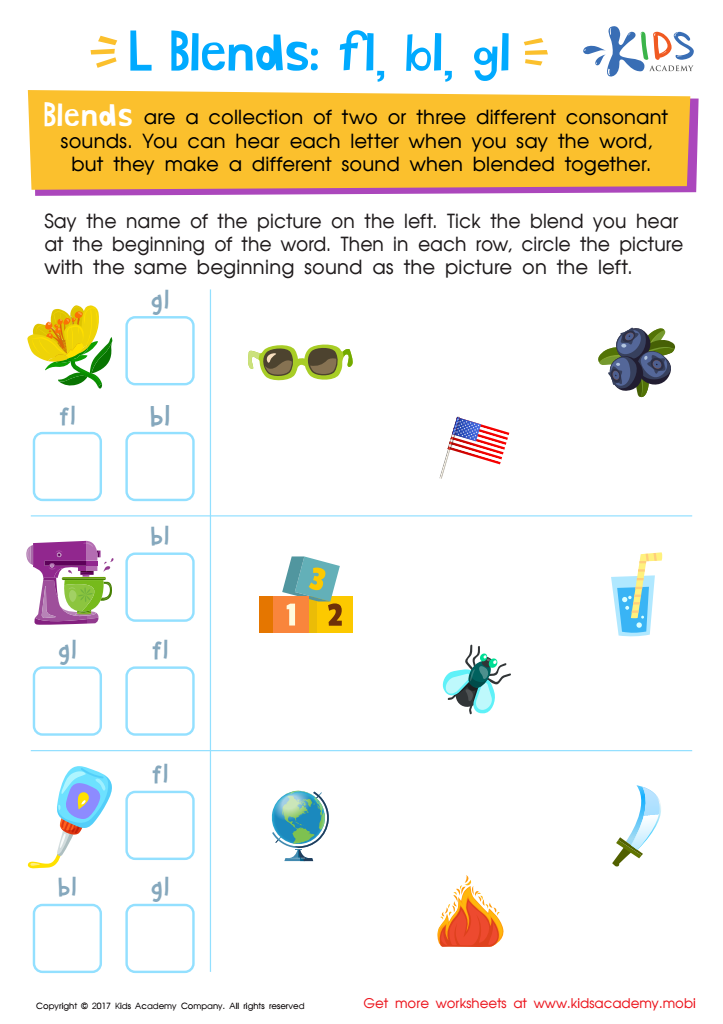Normal Initial and Final Consonant Blends Worksheets for Ages 5-7
4 filtered results
-
From - To
Help your child build essential reading skills with our "Normal Initial and Final Consonant Blends Worksheets for Ages 5-7". These engaging activities are specially designed to assist young learners in recognizing and blending beginning and ending consonants. Utilizing fun and interactive exercises, children will enhance their phonemic awareness, improve pronunciation, and boost their confidence in reading and spelling. Perfect for home and classroom use, each worksheet aligns with educational standards to ensure consistent progress. Explore our collection today and support your child's literacy journey with these foundational resources. Visit [Link] for more information and free printable worksheets.


Review the Blends Worksheet


Consonant Blends: "Dr" and "Tr" Printable


L Blends: "Pl", "Cl" and "Sl" Printable


Blending Consonants: "Fl", "Bl" and "Gl" Printable
Normal initial and final consonant blends are critical building blocks in early literacy development for children aged 5-7. These blends, which include combinations like "bl," "st," "cr" for initial blends, and "nd," "lt," "mp" for final blends, help children recognize and produce different sounds that form the basis of language. Mastering these blends enhances phonemic awareness, which is essential for efficient word recognition and reading fluency.
When children can accurately identify and articulate consonant blends, they are better equipped to decode words, making the reading process smoother and more intuitive. This skill aids in expanding their vocabulary and allows for better comprehension skills, as they can focus more on the meaning of the text rather than struggling with the pronunciation of words.
Additionally, being proficient in consonant blends supports children's writing abilities. They can spell words correctly and express their thoughts more clearly, boosting their confidence in both verbal and written communication. It contributes to their overall academic success and encourages a lifelong love of reading and learning.
For teachers and parents, paying attention to these builds ensures that children have a strong foundation in their literacy skills. It sets the stage for future educational achievements and provides them with the essential tools they need to succeed in their student journey and beyond.

 Assign to the classroom
Assign to the classroom






